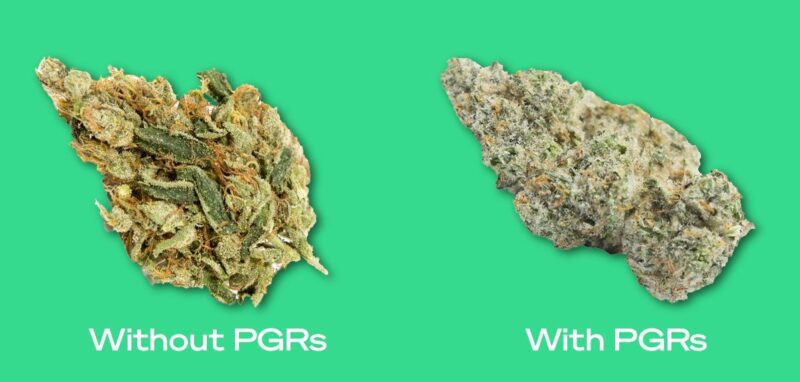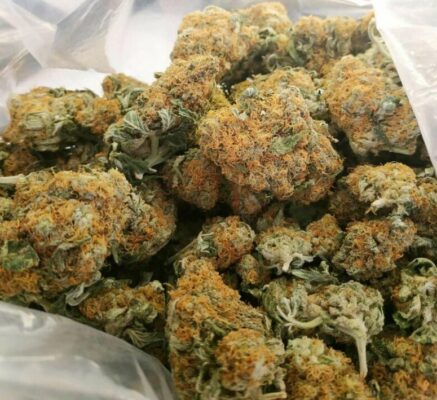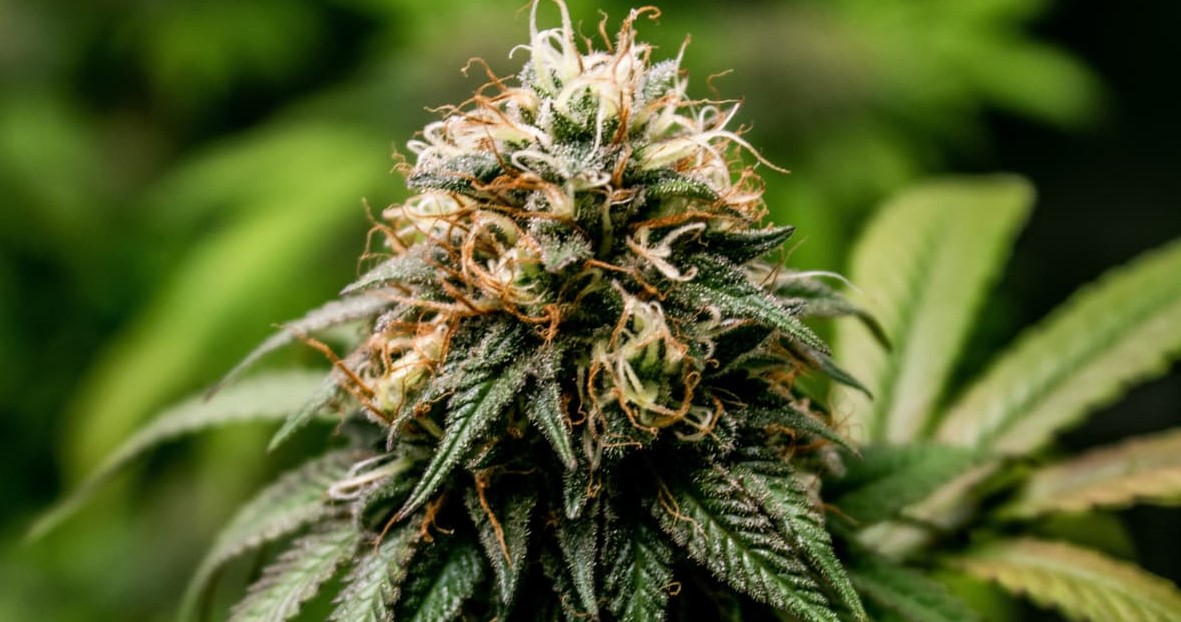Non classé
Plant Growth Regulators: What Are PGRs
It’s appalling how little we know about the sources of what we put into our bodies. For example, when you go to a dispensary, do you have any idea how the herbe was grown? Who is the grower? Where did they marijuana come from? Was it grown with chemicals or naturally? If you use cannabis oil, was it extracted cleanly? And so on.
We’re sorry to say, but it looks like we have another question for you: did your buds come into contact with Plant Growth Regulators (PGRs)? If the buds you have are very dense, made up of brown hairs, and don’t smell too strong, it’s likely they’ve been exposed to PGRs.
What Are Plant Growth Regulators?
Although it may sound like PGRs use dangerous chemicals to control plant growth, that is not true. According to FIFRA, PGRs are any substance or combination of substances that either naturally improve or decrease the rate of growth/maturation in plants, thereby changing their natural behavior.
Chemicals known as Plant Growth Retardants (PGRs) are commonly used in agricultural farming on crops including peppers and eggplants. PGRs’ primary purpose is to increase the yield of crops, reduce fruit drop frequency, and manipulate the development of the crops and the quality of storage. By interfering with the hormonal pathways of plants, PGRs effectively retard plant growth.
They impact phytohormones, which play a crucial role in regulating a plant’s growth and development. These hormones are naturally regulated by environmental cues, receptors, and a plant’s genome. There are five major classes of plant hormones:
- Gibberellin
- Auxin
- Cytokinin
- Ethylene
- Abscisic Acid (ABA)
The chart above shows the development of a plant with the assistance of five different hormones. Some recent research has revealed that there are other types of chemicals similar to hormones, called brassinosteroids, which help regulate a plant’s growth and immunity.
In general, there are two types of plant growth regulators: those that are chemically derived and those that occur naturally. Chemically derived PGRs interfere with hormone breakdown or mimic existing hormones. In marijuana cultivation, using these PGRs can lead to increased density and higher yields.

There is a common misconception that all plant growth regulators (PGRs) are dangerous. However, natural PGRs such as chitosan, triacontanol, and kelp exist in our atmosphere without causing any problems for plants. With that being said, let’s take a closer look at the dangers of synthetic PGRs.
Manipulation of Growth Cycles for Greater Yields
The only advantage of using chemically derived PGRs when growing a marijuana crop is higher yields. However, fatter buds do not necessarily equate to more profit. In fact, the profit motive often causes organizations to overlook important health and safety concerns.
PGRs, or plant growth regulators, that interfere with the creation of plant hormones prevent or halt growth. However, other PGRs have the potential to boost growth. In fact, growers can activate certain genes to speed up the marijuana flowering process so that it occurs faster. Additionally,’ switch off’ genes are also available for use in order to ensure plants grow short and stocky – which comes in very handy for those who are looking to maximize their growing space.
There are genes that, when activated, will haste the growth process and bring marijuana to the flowering stage quicker.
PGRs support cannabis yields through cell growth induced by signal transduction pathways. When genes that stimulate growth become activated, plant cells start to get larger. The cytoplasm of the cell takes in more water, which ends up in the central vacuole of the cell. As water enters the plant’s cell, the vacuole’s water volume increases and expands along with the walls ofthecell.
Plant cells have greater water retention, which is due to the hormone auxin. Auxin also aids in cell wall growth by acidifying it and expanding proteins. Cell walls are made of cellulose, which increases with more auxin present. Although your harvest will be larger, the quality is decreased because this extra weight consists mostly of water and cellulose. In short: You may have ‘fatter’ buds, but the THC content of your marijuana plants suffers as a result.
The Dangers of PGRs
However, many growers are using PGRs without even realizing it. They’re commonly found in growth boosters, nutrients, and vitamin/hormone enhancers.
After being discovered in the late 1920s, PGRs were utilized in agriculture until they were banned for use on food crops in the 1970s. In classification with some other nations, PGRs are considered pesticides.
Alar
The 1989 Alar scare is a shining example of why PGRs (plant growth regulators) shouldn’t be used on marijuana. Also known as daminozide, Alar is a manmade chemical originally designed to quicken the maturation process of cherries and apples. After testing the carcinogen levels in rats for two years, the FDA gave it their approval in 1968.
Dr. Bela Toth found in the 1970s that Alar caused tumors in various organs of mice- such as the liver, lungs, and kidneys- when given at a dosage multiple times what would be considered safe for humans. In 1978, The National Cancer Institute released a report which said that while Alar was carcinogenic, it was only weakly so. However, more research done into unsymmetrical dimethylhydrazine (UDMH), Alar’s chemical breakdown product — showed cancersous tumors developing in lab animals exposed to even trace amounts of UDMH.
The EPA classified PGRs as probable human carcinogens in 1984 and 1987 and banned their use on food crops in the U.S. in 1989. However, they were still allowed for non-food crops. It’s estimated that the entire scandal cost the United States apple industry around $100 million. So growers who depend on PGRs for marijuana aren’t likely to give them up without a fight.
Paclobutrazol
Paclobutrazol (PBZ) is another PGR that apparently gives a lot of issue in Australia. PBZ, like other plant growth retardants, work by binding to enzymes crucial for weed growth. In the case of PBZ, it inhibits the terpene synthase enzyme which results in a blockage between the terpene synthesis and THC synthase pathways.
Ultimately, the use of plant growth regulators (PGRs) like PBZ reduces a hemp plant’s ability to produce THC. This means that CBD products grown using PBZ may also contain trace amounts of PGRs. PBZ also inhibits the development of terpenes, which is why hemp grown using it has no real smell.
Generally, buds sprayed with this chemical are very firm and come with heavy hairs that are also matted. If PBZ is set on fire, it will break down into nitrosamines, which unfortunately happens to be one of the most cancer-causing chemicals in cigarettes! Other problems include infertility in men and liver damage.
Chlormequat Chloride
Chlormequat chloride is a potentially harmful PGR that has been approved for use as a pesticide in the European Union. It increases crop yields, but it is now considered an ‘extremely hazardous’ substance in the United States. Studies on mammals have found that it could cause liver damage.
Uniconazole
Uniconazole is banned in some states due to its ability to enlarge root systems. Even though there isn’t as much research on Uniconazole as other growth regulators, what available information suggests it is more harmful than PBZ. Additionally, potential side effects are difficult respiration and liver damage.
PGRs Are Bad for The Environment
PGRs not only have the potential to damage fish and their habitat but also reduce a soil’s microorganism diversity. As you know, run-off from chemical fertilizers is harming our rivers, and PGRs follow suit with similar damaging effects.
PGRs have been described as being similar to athletes who use performance-enhancing drugs, such as anabolic steroids. While the athlete may experience faster recovery and greater muscle growth, there are also serious side effects involved, including cardiovascular damage. A bodybuilder may look incredibly powerful on the outside, but their internal organs could be close to failing. This is why we often hear reports of competitive bodybuilders having heart attacks and dying before they turn 50.
Using PGRs on marijuana plants may make them look larger, but it also making the product weaker.

How Do I Know If My Weed Was Treated with PGRs?
Though you might buy marijuana from a dispensary, always question the source. If it’s good quality weed, the buds will be very hard and coated in brown hairs. There should be little to no visible trichomes or scent. Keep in mind that high-quality weed often doesn’t look pretty–the buds are dark and dull with dense brown hairs.
With some cannabis information under your belt, you will be able to tell the difference between PGR weed with thick dark stems and organic weed that is usually vibrant and full of color.
Final Thoughts on PGRs
It is crucial to remember that not all growth regulators (PGRs) are bad. Numerous PGRs develop naturally and have the ability to increase a marijuana plant’s genetic potential. Chitosan, which is organic molecule coming from chitin, is one example of this. It can be found in an exoskeleton of a crustacean and NASA is currently testing it to see if it aids plant growth in space conditions. Another natural growth stimulant triacontanol has the potency to improve yields significantly returning results rapidly.
It’s worth mentioning that the studies which discovered harmful effects of PGR typically included astronomical levels that would be impossible to consume in one lifetime. For example, one of the alar studies (regarding UDMH) involved 132,000 to 266,000 times more than what a preschooler normally eats in a day when consuming an apple!
Although the actual danger of PGRs may not be as high as some people believe, it is still something we should treat with caution.
It is important to consider that, though there are studies which show the harmful effects of PGRs, for every study which finds this evidence there is at least one more that suggests minimal impact on human health. You may argue then that consuming PGR-laden weed is not much different from eating junk food. For British readers in particular, this may come as some comfort since PBZ residue is allowed on cherry, pear, apple, and plum trees!
While the potential damage caused by PGRs might be overestimated, it is still something to take into consideration. If you can, only use marijuana that was grown without chemical interference.


